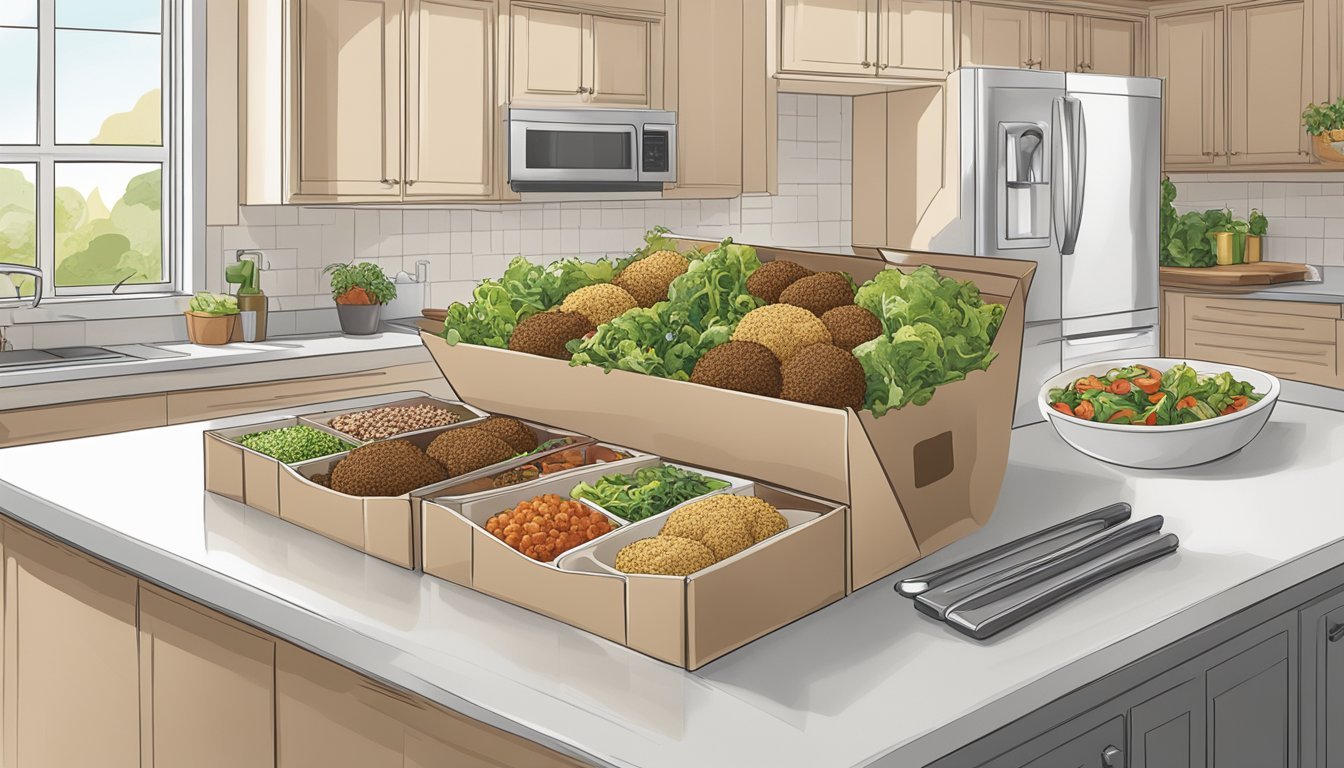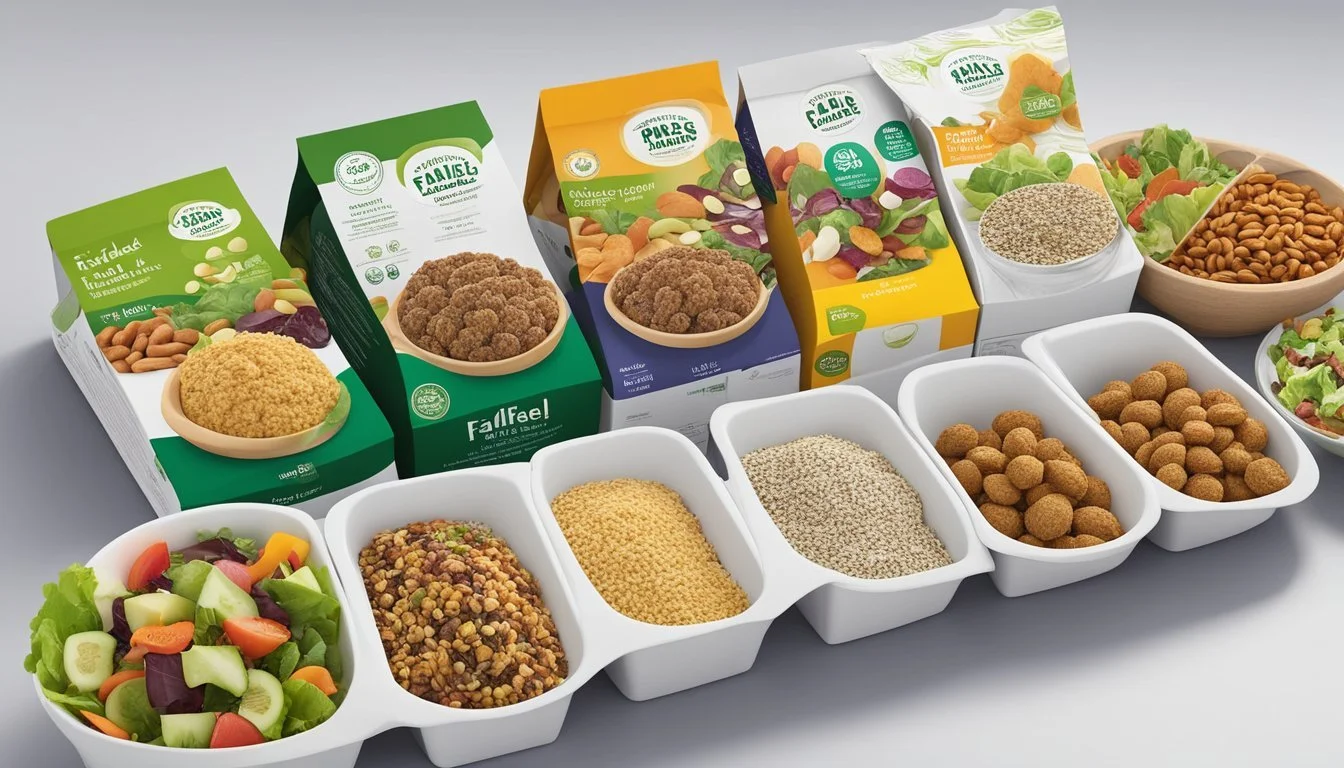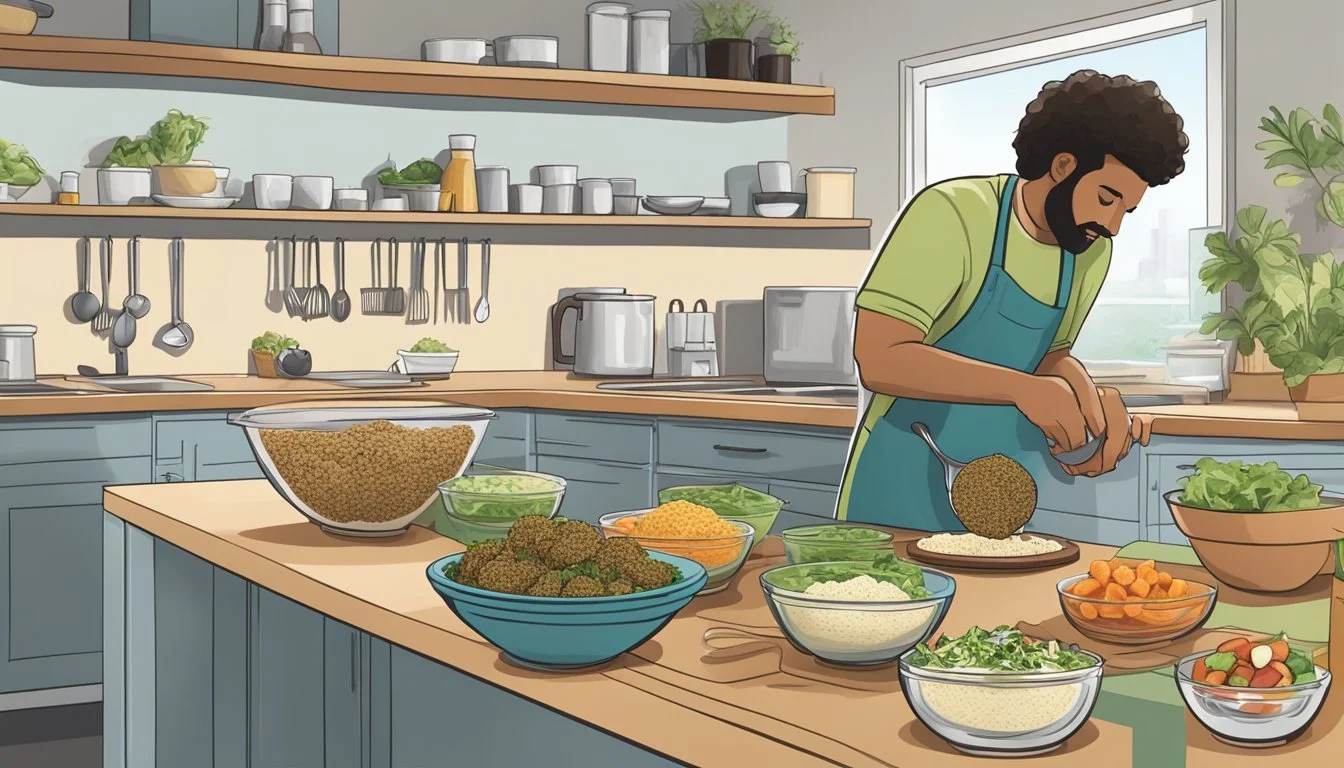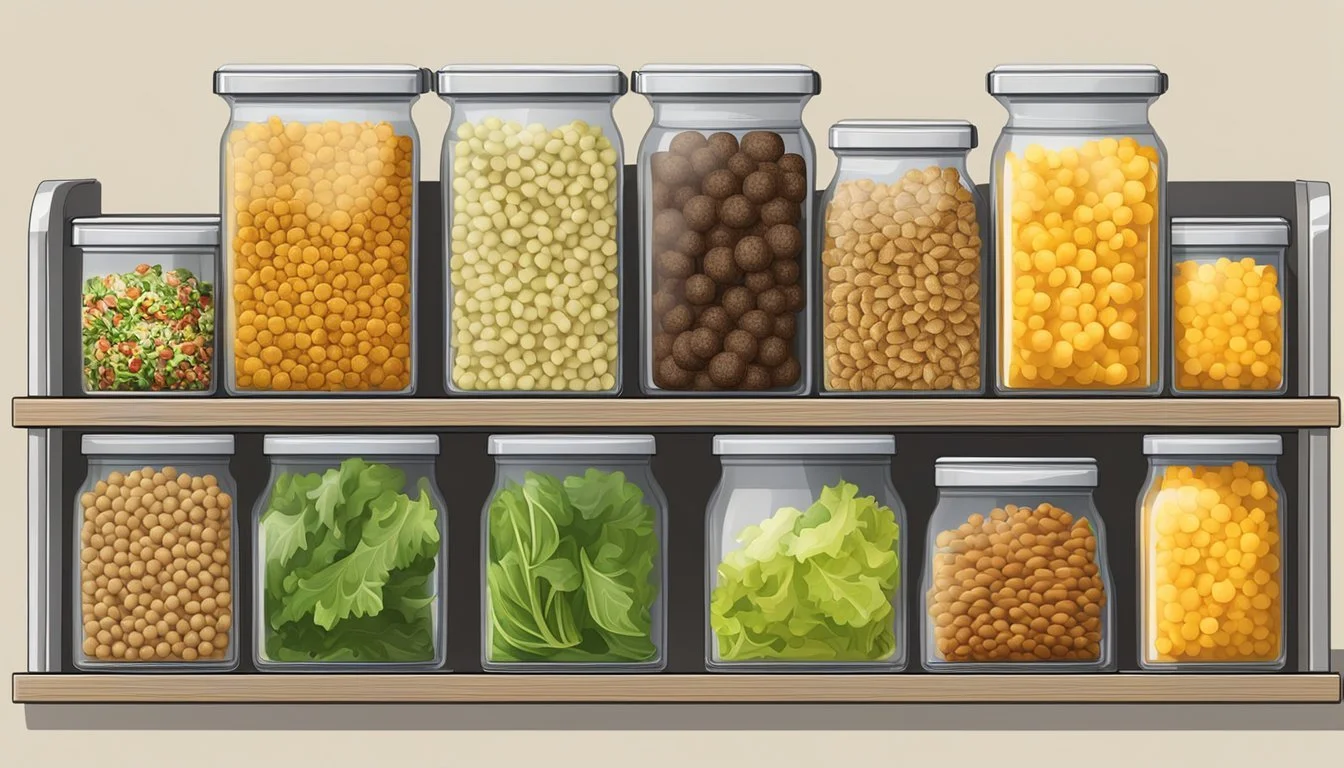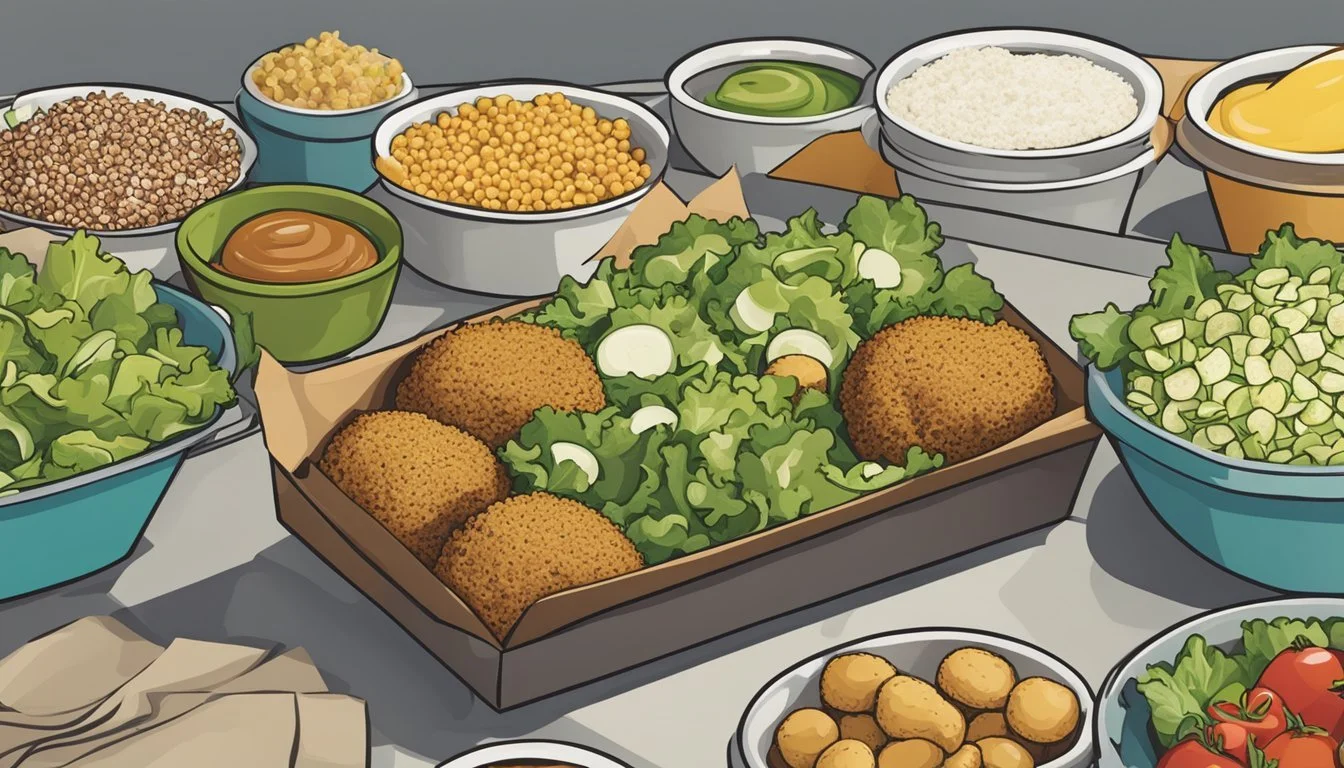Boxed Falafel Mix Salad Toppers
Enhancing Greens with Mediterranean Flavors
Falafel, a Middle Eastern dish traditionally made from ground chickpeas or fava beans, herbs, and spices, has become a global staple for vegetarian and meat-eaters alike. Its versatility allows it to be served as a main dish, in wraps, or as a flavorful addition to salads (What wine goes well with salads?). Boxed falafel mixes provide a convenient and quick alternative to the labor-intensive process of making falafel from scratch. These mixes require minimal preparation and cooking time, making them an ideal choice for busy individuals seeking a nutritious and protein-rich meal component or topping.
Incorporating falafel made from boxed mixes into salads adds a hearty element to what might otherwise be a light meal. The distinct flavors and spices within the falafel balance well with a variety of fresh greens and vegetables. Each mix boasts its own unique blend of spices, which can be selected based on personal preference or the desired flavor profile of the salad. Whether topped with traditional Mediterranean ingredients or integrated into a fusion dish, falafel enhances the salad's taste and textural experience.
As consumers lean towards convenient, health-conscious meal options, boxed falafel mixes meet the demand by offering a balance of ease and nutrition. Falafel salad, served with a mix of fresh vegetables and a suitable dressing, presents itself as a fulfilling meal that satisfies diverse dietary needs and preferences. The ready-to-use nature of boxed falafel mix makes it a valuable kitchen staple for those looking to enrich their dishes with a Mediterranean flair.
Understanding Falafel
Falafel is a widely enjoyed Mediterranean delicacy, appreciated for its rich flavors and high-protein content, often serving as a versatile component in salads.
History and Origin
Falafel has its roots deep in the Middle East, where it is a traditional food often regarded as fast street fare. Originally, falafel was made from ground chickpeas or fava beans, herbs, and spices, and then deep-fried to achieve a crispy exterior with a soft, flavorful interior.
Key Ingredients
The primary ingredient in falafel is chickpeas, giving it a hearty base that is high in protein and fiber. Traditional seasonings include cilantro, parsley, garlic, onion, cumin, and coriander. When prepared, falafel is enjoyed by a wide audience, including those following vegan and vegetarian diets due to its plant-based composition.
Falafel Mix vs Homemade
Falafel Mix:
Pros: Convenient, time-saving, consistent taste.
Cons: May contain preservatives or additives, less freshness.
Homemade Falafel:
Pros: Fresh ingredients, customizable flavor, no unnecessary additives.
Cons: More time-consuming, potential inconsistency.
Both options provide a flavorful Mediterranean experience, but homemade preparations may offer a more authentic taste and texture.
Nutritional Profile
Falafel mix salad toppers offer a substantial nutrition boost to any meal. They are particularly noteworthy for their protein content, dietary fiber, and caloric value. Below, key nutritional facets are dissected to underline the benefits they bring to the table.
Protein Content
Falafel mix, derived from chickpeas and fava beans, is a good source of plant-based protein. An average serving can provide a significant portion of the recommended daily intake. Protein is pivotal for muscle repair and growth.
Protein per serving: Approximately 6g
Dietary Fiber
The fiber content in boxed falafel mix salad toppers is commendable. Fiber aids in maintaining digestive health and can contribute to a feeling of fullness.
Fiber per serving: Roughly 5g
Caloric Value
Managing caloric intake is essential for those monitoring their weight. Boxed falafel mix, when used as a salad topper, offers a balanced addition to meals without excessively increasing caloric count.
Calories per serving: Around 200 kcal
Preparing Boxed Falafel Mix
When preparing falafel from a boxed mix, one's focus should be on the consistency of the mixture, the cooking method, and the specific instructions for frying or baking, including alternative methods like air frying. Ensuring these elements are correct guarantees delicious falafel that can be used as a versatile salad topper.
Mix Instructions
To start, it is vital to combine the falafel mix with the proper amount of water as advised on the box. Typically, this involves blending a specified cup measurement of dry mix with a corresponding water quantity—often 3/4 cup of water to 1 cup of mix. The mixture should rest, covered loosely, for 30 to 60 minutes to allow for proper hydration. For those seeking a vegan and possibly gluten-free option, one should ensure the selected boxed mix complies with these dietary preferences. Adding baking powder or baking soda, if required and as per the mix instructions, will aid in achieving the right texture.
Baking Versus Frying
Baking is a healthier alternative to frying as it minimizes oil usage. Preheat the oven to the temperature specified by the mix instructions, often around 375 to 425 degrees Fahrenheit. Form the hydrated falafel mix into patties or balls, then place them on a baking sheet—optionally lined with parchment paper—and brush lightly with olive oil. Bake until they're golden brown, which should take approximately 10-15 minutes per side, depending on the oven and falafel size.
Frying falafel involves heating a deep skillet or Dutch oven with at least an inch of oil, such as olive or a neutral vegetable oil, to a medium-high temperature. The falafel mix should be shaped and dropped carefully into the hot oil, then fried until they achieve a crispy exterior and a golden-brown color. It's crucial not to crowd the skillet to ensure consistent cooking and to turn the falafel midway for even browning.
Air Fryer Method
An air fryer provides a convenient and less oily method of 'frying' the falafel. Preheat the air fryer to around 370 degrees Fahrenheit. The falafel mix should be shaped as previously described, and the formed falafel balls or patties can be lightly coated with a spray of olive oil. Arrange the falafel in the air fryer basket in a single layer, ensuring they do not touch. Air fry for approximately 10-12 minutes or until golden-brown, flipping them halfway through the cooking process. This method yields a crispy exterior similar to deep frying but with significantly less oil.
Salad Composition
Crafting a well-balanced salad involves a thoughtful combination of fresh vegetables, adequate proteins, and complementary dressings and add-ons. Each component plays a pivotal role in creating a nutritious and satisfying meal.
Choice of Vegetables
When selecting vegetables for a salad, variety is key. The base often includes leafy greens such as romaine, spinach, or arugula. For added flavor and texture, one might consider including:
Cherry tomatoes: Sweet and juicy
Radishes: Crisp with a peppery kick
English cucumber: Refreshing and crunchy
Carrots: A slight sweetness with a satisfying crunch
A traditional tabbouleh might provide inspiration, with its finely chopped parsley, tomatoes, and onions mixed with lemon juice.
Incorporating Proteins
Proteins are essential for a fulfilling salad. Boxed falafel mix offers a convenient source of protein that is both flavorful and easy to prepare. One can crumble or place falafel balls directly atop the salad. The recommended serving is about 4-5 falafels per individual salad. They complement the fresh veggies and add substantial texture.
Dressings and Add-ons
The dressing can elevate a salad from ordinary to extraordinary. A simple lemon juice vinaigrette remains a favorite for its bright, acidic touch that enhances the flavors of the vegetables and falafel. Other components can include:
Olives: Offering a salty and briny contrast
Fresh herbs: Such as additional parsley to mirror elements in the falafel
For a creamy element, a dollop of hummus or a drizzle of tahini dressing pairs well with the Mediterranean theme of the salad.
Flavor Enhancements
Enhancing the flavor of boxed falafel mix as salad toppers can be artfully achieved by incorporating a versatile range of herbs and spices, creating diverse tahini variations, and introducing acidic elements. These enhancements can significantly elevate the taste profile.
Herbs and Spices
Incorporating a blend of cumin and garlic can add a warm and aromatic depth to falafel. For a refreshing twist, fresh herbs such as cilantro and dill not only infuse freshness but also complement the earthiness of the chickpeas.
Cumin: Adds a smoky touch.
Garlic: Introduces a robust flavor.
Cilantro: Offers a citrusy note.
Dill: Provides a sweet and grassy undertone.
Tahini Variations
Tahini sauce is a staple in enriching falafel, but variations like lemon tahini dressing can introduce a zesty tang. A well-crafted tahini dressing can balance the savory notes of falafel with its creamy, nutty richness.
Tahini Sauce: Basic creamy and nutty complement.
Lemon Tahini Dressing: Adds a bright, tart edge.
Acidic Elements
A hint of acidity can cut through the richness of tahini and the density of falafel. Lemon juice not only tenderizes but also enhances other flavors. Sliced radish and kalamata olives contribute to the salad's acidic profile with their sharp, peppery, and briny notes, respectively.
Lemon: Brightens up the overall flavor.
Radish: Adds a peppery crunch.
Kalamata Olives: Introduce a mild, vinegary taste.
Serving Recommendations
Boxed falafel mix adds convenience and versatility to the kitchen, transforming into delightful salad toppers that elevate a simple dish to a gourmet experience. Here we will explore the finest ways to pair, present, and vary these falafel topper creations.
Accompaniments and Sides
Pita Bread: A classic pairing, warm pita bread provides a soft and chewy texture that complements the crispness of falafel.
Hummus: Rich and creamy hummus serves as an excellent dip or spread, adding a smooth contrast.
Tzatziki: This refreshing tzatziki sauce, with its yogurt base, introduces a cool and tangy flavor that balances the spices in falafel.
Fava Beans: Incorporating fava beans can add an earthy depth and increase the protein content.
Feta Cheese: Crumbled feta cheese finishes the dish with a salty, tangy punch and a creamy mouthfeel.
Presentation Tips
Layering: Begin with a leafy green base, stack with falafel salad toppers, and drizzle sauces like hummus or tzatziki artistically.
Color Balance: Introduce vibrant vegetables to the mix for visual appeal—think cherry tomatoes, red onions, and cucumbers.
Portion Control: A serving spoonful of falafel toppers should suffice for an individual salad. Avoid overloading to maintain elegance.
Recipe Variations
Falafel Sandwich: Swap out the salad for a falafel sandwich in pita bread, adding hummus or feta cheese for a moist, flavorful element.
Creamy Aspects: To infuse creaminess without overpowering, mix feta cheese or a dollop of tzatziki within the falafel mix prior to baking or frying.
Leftovers Transformation: Refresh leftovers by integrating them into a falafel salad topper—this could include roasted vegetables or grains for a new texture and flavor profile.
Storing and Preservation
Proper storage techniques are crucial for maintaining the quality and safety of boxed falafel mix salad toppers. The following methods are designed to maximize freshness for both leftover falafel balls and any accompanying fresh cilantro leaves.
Refrigeration and Freezing
Refrigeration: Freshly made falafel balls should be stored in an airtight container. They can be kept in the refrigerator for up to 3-4 days.
Cilantro: Cilantro leaves should be loosely covered with plastic and refrigerated, ideally in a container that allows some air circulation. Use within several days for optimal freshness.
Freezing: For longer term storage, falafel balls can be frozen. They should be:
Placed on a baking sheet and frozen until hard
Transferred to a freezer-safe bag or container
Labeled with the date and kept at 0°F (-18°C) or below
Frozen falafel can last for up to 3 months
Reheating Tips
When reheating frozen falafel, ensure consistent quality by:
Thawing them in the refrigerator overnight, or using the microwave for a quick option.
Reheating them in an oven preheated to 350°F (175°C) until heated through; typically around 10-15 minutes.
If using a microwave, cover falafel with a damp paper towel to prevent drying out.
Using these preservation methods, one can ensure their falafel mix salad toppers retain their desired taste and texture, ready for use whenever needed.
Special Dietary Considerations
When choosing to use a boxed falafel mix as a salad topper, individuals with dietary restrictions need to consider gluten content and sodium levels. It's important to examine the product labeling to ensure the falafel mix aligns with one's dietary needs.
Gluten-Free Options
Some boxed falafel mixes contain wheat flour, making them unsuitable for those with gluten intolerance or celiac disease. However, gluten-free options are available that use alternative binding agents such as chickpea flour or fava bean flour. These alternatives are inherently gluten-free and safe for those who avoid gluten. When selecting a gluten-free falafel mix, always look for the certified gluten-free label to ensure no cross-contamination occurs during production.
Ingredients to Watch:
Traditional wheat flour (contains gluten)
Chickpea or fava bean flour (gluten-free)
Lowering Sodium
Boxed falafel mixes can sometimes be high in sodium, which is added for flavor and preservative purposes. To manage sodium intake, one should look for mixes labeled as low-sodium or no added salt. Additionally, by preparing a homemade dressing or using fresh herbs and lemon juice, individuals can enhance the flavor of their salad without increasing their sodium consumption.
Tips for Reducing Sodium:
Choose low-sodium or no added salt falafel mixes
Flavor with fresh herbs and citrus instead of additional salt
These options enable those following a vegetarian or vegan diet to enjoy falafel as a nutritious and compliant salad topping. Always check the label for any animal-derived ingredients if adherence to these diets is a priority.
Planning and Party Tips
When hosting a party, a host must consider the right quantities of food to prepare and imaginative themes that could make the event more memorable. Using boxed falafel mix as a salad topper is a unique and flavorful idea that suits various party themes and dietary preferences.
Quantities and Portions
To ensure one has enough falafel mix for a party, they should plan on each guest having three to four falafel patties. Here's a quick guide on how much falafel mix one might need based on the number of guests:
5-10 guests: 1 box of falafel mix
10-20 guests: 2 boxes of falafel mix
20-30 guests: 3 boxes of falafel mix
It's advisable to prepare some extra falafel as they are often popular and can be used for those who prefer a heftier portion or second helpings. The balance of the mix's briny and salty flavors should be considered in relation to the other dishes on the menu to ensure a harmonious taste experience for the guests.
Theme Ideas
For thematic consistency, one could incorporate the falafel into a Mediterranean Mezze party, which naturally pairs with the falafel's Middle Eastern heritage. Alternatively, a Global Tapas theme would allow falafels to shine alongside other international small plates, offering a variety of tastes and textures.
Mediterranean Mezze: Include options like hummus, tzatziki, pita bread, and a range of fresh vegetables.
Global Tapas: Pair falafel with other international dishes like Spanish patatas bravas, bruschetta, or Asian-inspired lettuce wraps.
By carefully planning the amount of falafel mix and selecting a cohesive party theme, a host can create an enjoyable experience that guests will appreciate for its taste and novelty.


